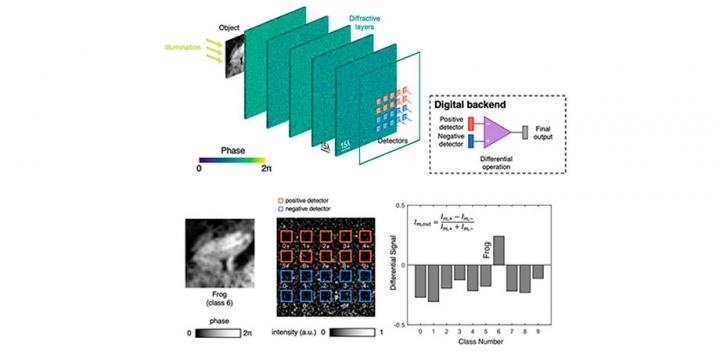Aug 14 2019
A new study, reported in the open-access journal Advanced Photonics, co-published by SPIE (the international society for optics and photonics) and Chinese Laser Press (CLP), has shown that there have been evident improvements in the inference and generalization performance of diffractive optical neural networks.
 Operation principles of a differential diffractive optical neural network. Since diffractive optical neural networks operate using coherent illumination, phase and/or amplitude channels of the input plane can be used to represent information. (Image credit: SPIE)
Operation principles of a differential diffractive optical neural network. Since diffractive optical neural networks operate using coherent illumination, phase and/or amplitude channels of the input plane can be used to represent information. (Image credit: SPIE)
A differential detection scheme, together with a set of parallel-operating diffractive optical networks, where every single network of the set is specialized to particularly identify a subgroup of object classes, is one of the main developments that has been investigated in the article titled “Class-specific differential detection in diffractive optical neural networks improves inference accuracy.”
SPIE Fellow Aydogan Ozcan of the University of California, Los Angeles, who is one of the authors of the study, stated that these results “provide a major advancement to bring optical neural network-based low-power and low-latency solutions for various machine-learning applications.”
This new study has been an important breakthrough in Ozcan’s optical machine-learning framework: fine-tuning of this method is particularly crucial for rapidly identifying target objects using considerably less energy compared to conventional computer-based machine learning systems. Eventually, it could be capable of providing several benefits for robotics, autonomous vehicles, many defense-related applications, etc.
These new systematic developments, particularly in diffractive optical network designs, can make progress in the growth of future-generation, task-specific, and intelligent computational camera systems.